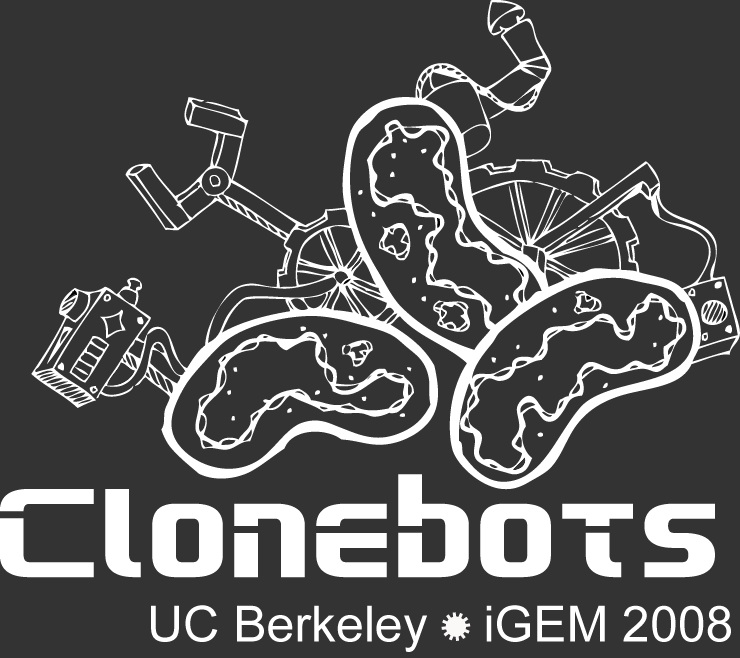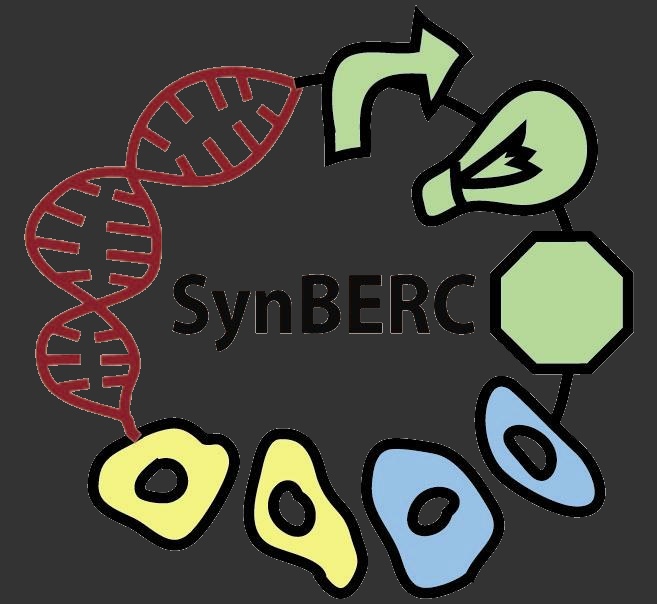Team:UC Berkeley
From 2008.igem.org
(Difference between revisions)
| Line 111: | Line 111: | ||
[[Image:ucb_genentech.jpeg|Genentech|200 px]] | [[Image:ucb_genentech.jpeg|Genentech|200 px]] | ||
[[Image:ucb_nsfe.jpeg|The National Science Foundation|100px]] | [[Image:ucb_nsfe.jpeg|The National Science Foundation|100px]] | ||
| + | [[Image:ucb_synberc.jpeg|SynBERC|100px]] | ||
Revision as of 03:04, 20 October 2008
| In an effort to optimize the manufacture of parts, we have designed Clonebots - a collection of devices and strains that aid in the synthesis and analysis of new parts. Our team has programmed Clonebots to perform processes critical for efficient manufacture of biological products. We created systems capable of in vivo genetic manipulations and constructed an inducible self-lysis device designed to reclaim a variety of products without the need for conventional methods of lysis. By replacing traditional mechanical operations with biologically encoded alternatives, Clonebots are capable of accomplishing many operations with a single automated liquid handling unit - a cost-effective, BioCAD-friendly approach to large-scale projects. |
| The promise of synthetic biology is that we can convert genetic engineering from a technically-intensive artform into an information-based technology. In essence, the biochemical behavior of a cell can be reduced to codes of A, T, C, and G. Nevertheless, the construction and analysis of engineered biological systems requires cumbersome laboratory protocols that provide a significant impediment to the advancement of our field. However, there are some unit operations that can be cost effectively automated at scale in the laboratory such as small volume liquid transfers, fluorescence measurements, and heating/cooling steps. If we can reduce all synthesis and analysis methodology to these simple operations, it will be readily possible to automate all aspects of synthetic biology research. The Clonebots project is an effort to solve these basic technical problems of synthetic biology with the substrate of our own medium—a live cell. We have attempted to construct genetic devices that perform common operations used in the manufacture of synthetic organisms. We initiated a variety of projects including BioBrick standard assembly, Gateway recombination, self-lysis for protein and plasmid purification, and the analysis of protein expression levels. Some of these devices were completed, and others are under continued development. We have described the full scope of our efforts here on the wiki. We will focus on 2 of the devices that we successfully constructed on our poster and presentation: a genetic self-lysis device and a Gateway cloning device. |
We would like to thank our generous sponsors.
 "
"



